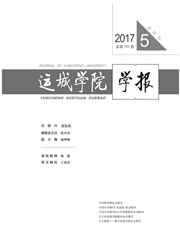

 中文摘要:
中文摘要:
学案体由案主简介、案主评价、案主资料汇编三部分组成.《明儒学案》亦是如此.从《明儒学案》案主资料汇编方面看,黄宗羲对绝大多数著者的案主资料汇编都是合理的.然书目繁多,一人能力有限,对一些文献看不到也是正常的.从颜均、何心隐、陈九川的例子看,黄宗羲对文献的选择的确又是存在问题的,要么没有看到,要么视而不见.纵然瑕不掩瑜,但这终究是《明儒学案》的不完美之处,这也是我们后人阅读《明儒学案》所应注意的.
 英文摘要:
英文摘要:
The body of the academic case consists of three parts: an introduction to the writer, an evalua- tion on the writer, and data collection tff the writer, and so is the "Ming Confucianism case". From the data col- lection of the writers of the " Ming Confucianism case", the vast majority of the cases data compilation by Huang Zongxi is reasonable. However, it is normal that some of the literature was neglected due to many a bibliogra- phy, and limited capacity. From the examples of Yan Jun, He Xinyin, and Chen Jiuchuan, Huang Zongxi is in- deed problematic on the document selection, whether he failed to see them, or paid no heed. All in all, it is im- perfections of the "Ming Confucianism case" eventually; therefore, this is what we should pay attention to while reading "Ming Confucianism case".
 同期刊论文项目
同期刊论文项目
 同项目期刊论文
同项目期刊论文
 期刊信息
期刊信息
